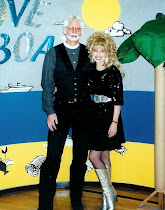
The Incas (and I suppose pre-Incas too) seemed to terrace everywhere for gardens and growing crops. They used elaborate irrigation systems too. The peak above us to the right is MP or the Old Peak and has a flag, and as I found out a gazebo, at the top.

A zoomed in shot of the peak.

While first going up to Intipunku I turned around and this is one of several shots I took of the road up to the ruins at MP. It's no wonder that no non-indigenous people found this place until 1911. It was overgrown then as you can imagine.

Intipunku, I think also called Sun Gate.

Looking down to the Urubamba River from Sun Gate. The Urubamba is a tributary of the Amazon River.

En route to Old Peak.

Some of the stairs near the top of the MP climb.

Top of Old Peak or MP in sight.

A shady spot to sit and feel the breeze.

A peek at the Urubamba over the back side of the mountain.

Looking down at the ruins and the other, more famous, Huayna Picchu peak. The haze is actually smoke. I saw three separate fires (actually, sources of smoke, I couldn't see the flames) from the top.

Again, the Urubamba as it winds around the steep mountains. The Andes rise above all this to much higher altitudes. The ruins sit at about 8,000 ft., which is not very high in comparison. You can see snow from MP at the higher elevations.

MP ruins zoomed in from above.

If you click on this you can see terracing even at the top of Huayna Picchu. On our flights over the Andes we could see terracing and evidence of the Incas on remote ranges.

To prove I had climbed to the top, I attempted to take self photos by hand. At least I managed to get part of the gazebo in the background on this one.

And here's the flag up close. You can see some smoke from one of the fires rising over the ridge at the left.



1 comment:
Looks fun...except the bug bites! :)
Post a Comment